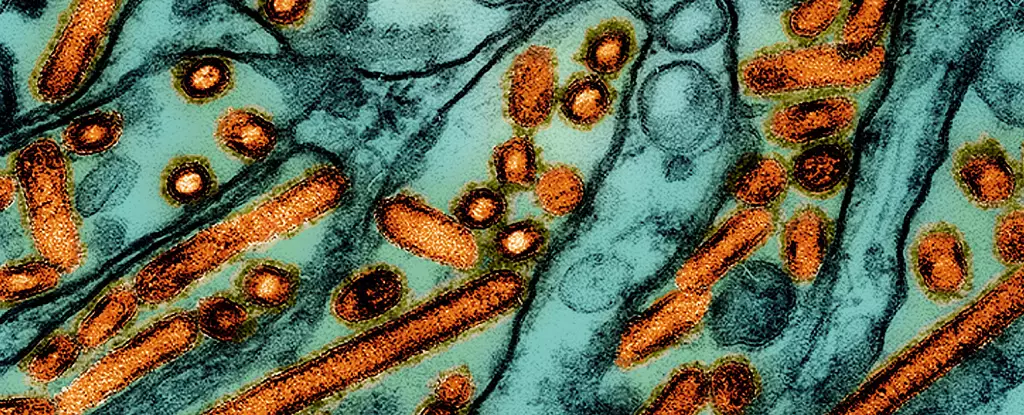The recent announcement from U.S. health authorities regarding an elderly patient in Louisiana suffering from severe avian influenza has escalated concerns surrounding the H5N1 virus. This case marks a significant turning point in the ongoing battle against avian influenza, which has raised alarms not only in America but across the globe. As we reassess our approach to public health and disease surveillance, this situation presents an opportunity for a critical examination of our response systems and public awareness regarding the potential threat of zoonotic diseases.
This Louisiana patient, who is over 65 and already has underlying medical conditions, illustrates the complications that arise when avian influenza infects vulnerable populations. Unlike the majority of recent cases in the U.S. that have been mild—many occurring in people without significant symptoms—this patient’s critical condition highlights the ability of H5N1 to evolve and pose severe health risks. The Centers for Disease Control and Prevention (CDC) reported that the patient had contact with sick and dead birds, a detail that underscores the importance of animal health surveillance, biosecurity measures, and public education regarding potential risks associated with backyard poultry.
The experience gleaned from global incidents of avian influenza further enriches this narrative; countries have reported alarming fatality rates associated with H5N1, with up to 50 percent of confirmed cases resulting in death. Statements from health officials underscore that the potential for severe outcomes warrants heightened preparedness and swift actions as we echo the lessons learned from previous outbreaks.
In response to this urgent situation, California has declared a state of emergency, allowing officials to access additional resources and bolster the monitoring of poultry health. Governor Gavin Newsom’s response signals a proactive approach rather than a reactive one—one that is crucial given how quickly zoonotic diseases can spread. The state’s action serves as a model for other regions grappling with potential outbreaks, highlighting the need for coordinated strategies that incorporate both environmental health and epidemiology.
As the outbreak evolves, understanding genetic frameworks becomes essential. The H5N1 strain identified in Louisiana belongs to the D1.1 genotype, recently found in both wildlife and poultry in various parts of the U.S. This genetic information not only assists in tracking the virus but also raises questions about its transmission pathways. Traditional efforts concentrated on identified vectors may fall short if the surveillance systems remain inadequate; hence, questions about the undetected spillover of the virus become increasingly critical.
Experts like Rebecca Christofferson from Louisiana State University have called attention to the glaring inadequacies within the current surveillance framework. The uncertainty surrounding undetectable animal-to-human spillovers and potential asymptomatic human-to-human transmission deserves immediate attention. As these issues remain shrouded in ambiguity, evolving our approach to monitoring and reporting becomes paramount. Officials should advocate for regular screenings and bolster educational initiatives that empower communities to report unusual bird deaths or illness promptly.
This position aligns with the views of epidemiologists like Meg Schaeffer, who stress that all indicators suggest a looming threat as avian flu becomes more prevalent. There is little room for complacency, especially with the evident symptoms in the Louisiana patient demonstrating the virus’s capacity to mutate towards increased virulence. Emphasizing urgency, public health agencies must ramp up their action plans and enhance citizen awareness of preventive measures.
In anticipation of broader human transmission, the U.S. has begun stockpiling vaccines specifically designed for bird flu. The recent emergence of mRNA vaccine technology, which has shown success in ferret studies, offers a glimmer of hope in creating robust defenses against H5N1. As we delve into an era of more sophisticated vaccine approaches, the imperative to enhance research funding and focus on swift deployment strategies becomes increasingly clear.
It is essential to align these advancements with practical measures; for instance, the U.S. Department of Agriculture’s newly instituted regulations to monitor raw milk could prevent any potential transmission pathways. This proactive stance reinforces the need for continuous oversight in agricultural practices, augmenting a safety net for public health against zoonotic threats.
The case in Louisiana serves as both a warning and a call to action. As we navigate the intricacies of zoonotic diseases like H5N1, it becomes evident that existing systems require substantial fortification. Strengthening disease surveillance, leveraging scientific advancements, and fostering community awareness are essential steps in building a resilient public health infrastructure prepared to respond to emerging threats. It is time to act decisively, ensuring that we are not caught off-guard as we face the possibility of a broader avian flu pandemic.


Leave a Reply